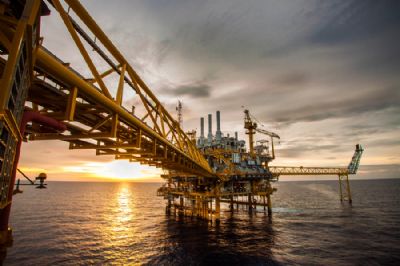
The Permian has more oil in place to allow output growth for the next few years, Occidental’s president and CEO Vicki Hollub said this week, commenting on mounting concerns among analysts that well productivity in the top oil-producing U.S. shale basin is dropping off.
“Well, we’ve seen continuing improvement in our oil well productivity and so we haven’t seen a drop off,” Hollub said at the ADIPEC energy conference in Abu Dhabi, as carried by Reuters.
While there has been a degradation of productivity with some operators, the Permian “still has enough additional oil to develop that will continue to grow over the next few years,” Oxy’s Hollub said.
The Permian and the rest of the U.S. shale basins are expected to see slightly lower oil production, by 40,000 barrels per day (bpd), this month compared to the estimated output of 9.433 million bpd in September, according to the EIA’s latest Drilling Productivity Report.
But the EIA slightly raised in September its projections for U.S. crude oil production this year and next—and expects annual output to set records in both years. U.S. crude oil production is seen averaging 12.78 million bpd in 2023 and 13.16 million bpd in 2024, up from 12.76 million bpd and 13.09 million bpd, respectively, in the August Short-Term Energy Outlook.
The U.S. is also set to lead non-OPEC+ production growth, which is expected at 2 million bpd in 2023 and at 1.3 million bpd in 2024, driven by the United States, Brazil, Canada, and Guyana, according to the EIA.
U.S. oil production will continue to grow, but at a slower pace than before, analysts say, as producers are much more focused on returning cash to investors than growing at all costs, as it was the case before 2020.
Despite a falling rig count in America, some major U.S. producers reported record output in the Permian for the second quarter, while others raised their outlooks for year-on-year gains, thanks to more efficient operations.
Occidental, for example, reported second-quarter production of 1.218 million boepd, which exceeded the mid-point of guidance by 42,000 boepd, and the company raised full-year production guidance to 1.21 million boepd.
“Our team’s technical achievements have positioned us for a strong second half of 2023, giving us confidence to raise full-year oil and gas production guidance,” Hollub said in comments on the Q2 performance.
Pioneer Natural Resources saw its Q2 oil production near the top end of the guidance range.
“Continued strong well productivity and highly efficient operations underpin our ability to increase full-year production guidance, while lowering full-year capital guidance through a purposeful reduction in activity,” Rich Dealy, President and Chief Operating Officer, said.
Supermajors ExxonMobil and Chevron both reported record-high Permian production for the second quarter.
For everyone in the U.S. shale patch, discipline, efficiency, and returns to shareholders are now the name of the game. Even at $90 oil, producers are not responding with more drilling, as they would have done in the 2010s.
Even with the inflation in some costs—including steel, tubulars, chemicals, and services—now showing signs of easing, U.S. companies are not changing their capital plans for the rest of 2023, Enverus said last month.
U.S. oil production will still grow, but growth would be measured and more difficult, not only because of well productivity and shrinking Tier 1 acreage, but also because of the capital discipline and changed mindset of the operators.
There is enough remaining drilling inventory across key North American shale plays despite the shrinking availability of Tier 1 acreage and the higher density in drilling locations, Enverus Intelligence Research (EIR) said last week.
“We see the cost of supply continuing to increase for North American shale producers over the next five years as the industry moves from developing Tier 1 to Tier 2-4 locations,” Dane Gregoris, managing director at EIR, said.
“However, ample Tier 2-4 inventory should alleviate fears of a structural decline in North American production or activity levels over the next 15 years,” Gregoris added.
“It’s not stagnation. Companies are still growing,” Ryan Duman, a principal analyst with Wood Mackenzie’s US Lower 48 Upstream research team, said in June.
“It’s just very different from what we saw in 2018. It’s predictable, financially sustainable growth.”
Source:https://oilprice.com/
